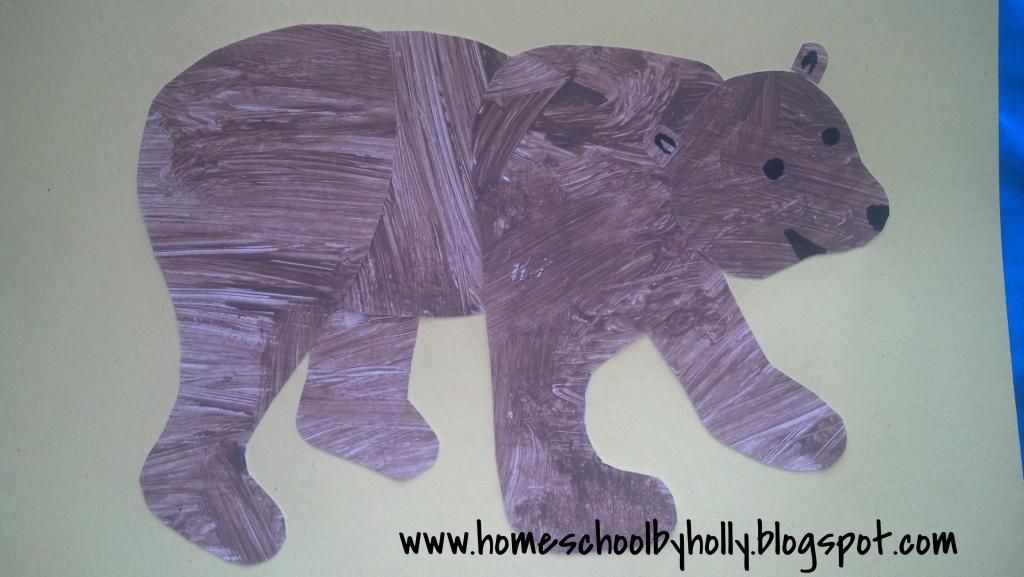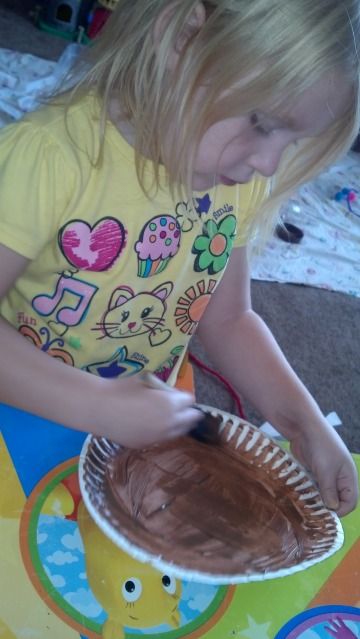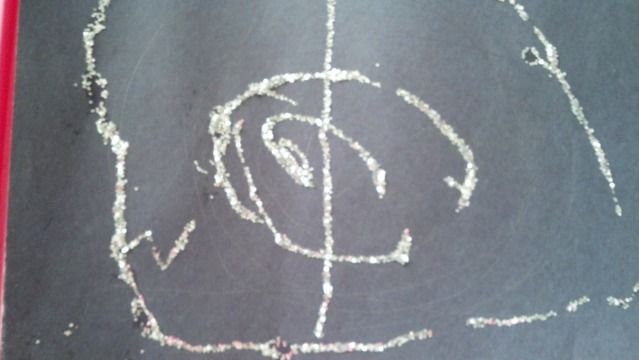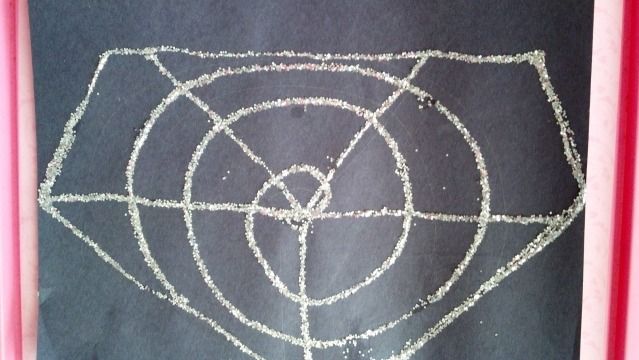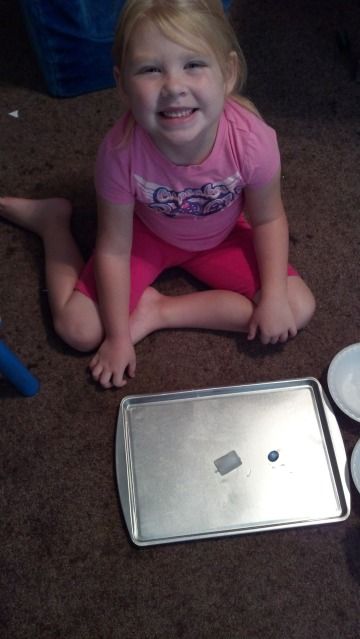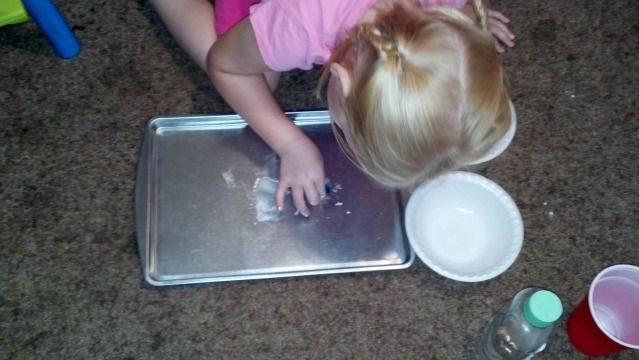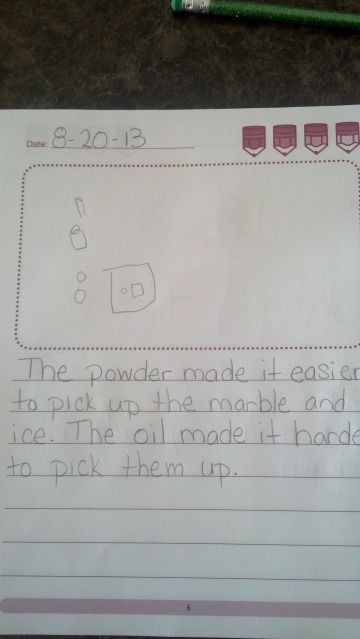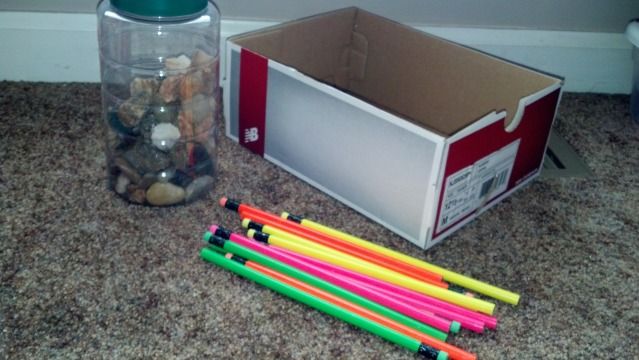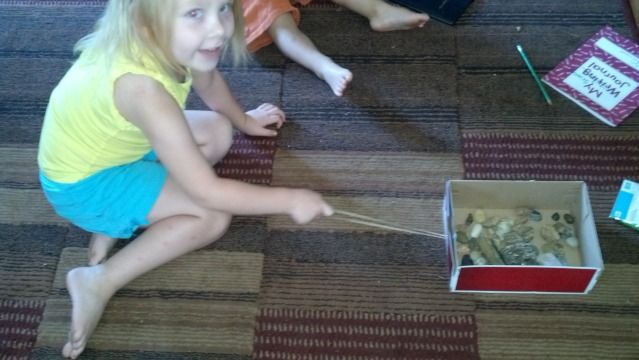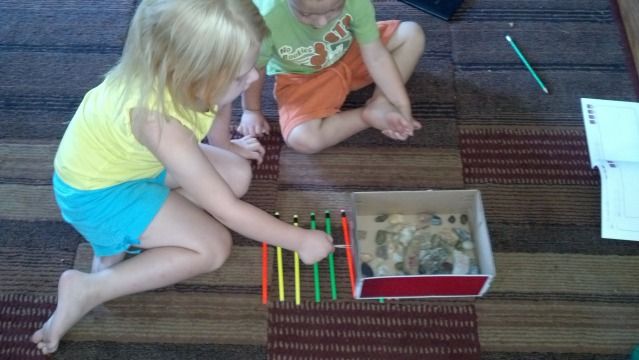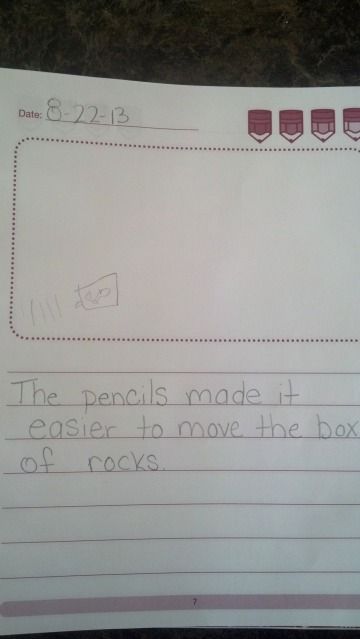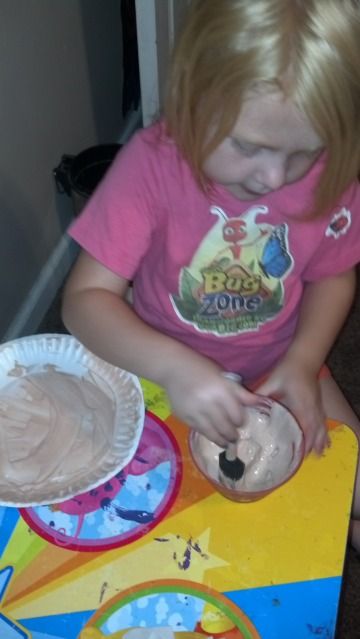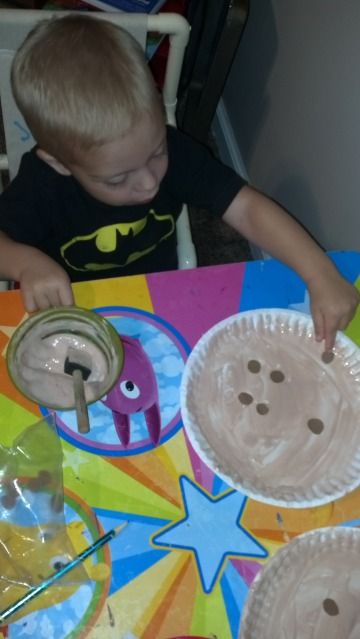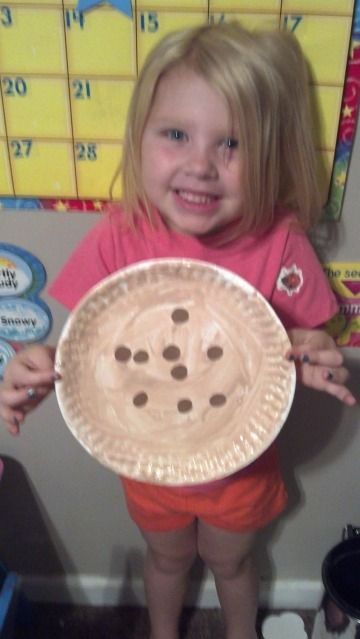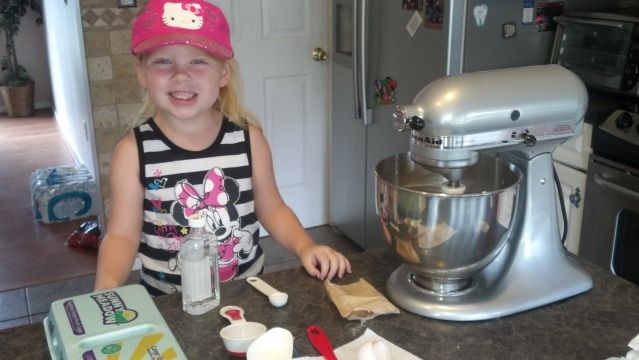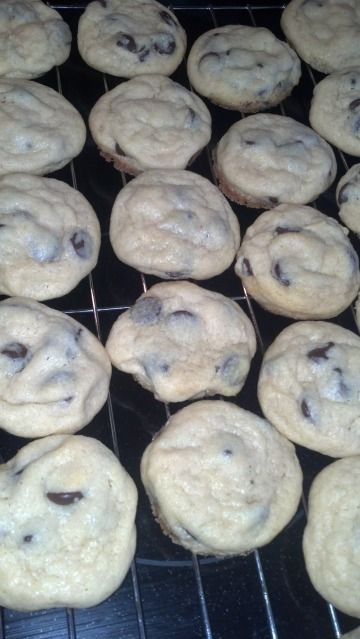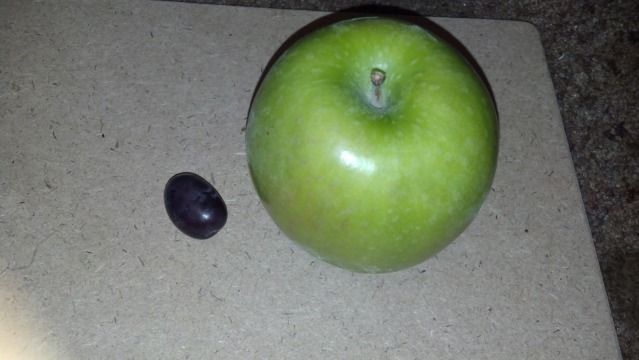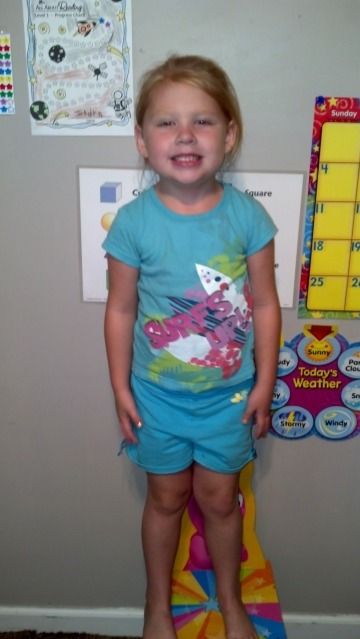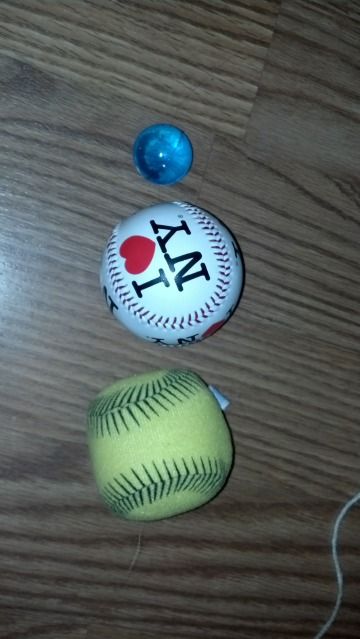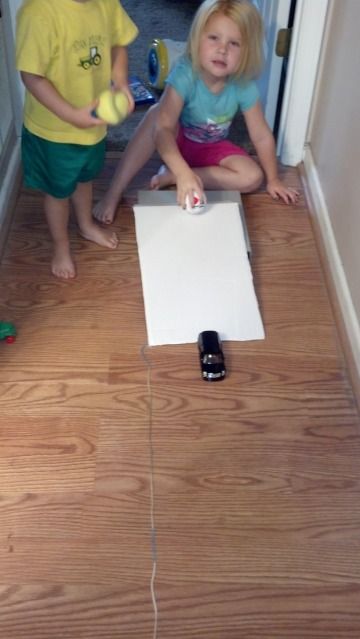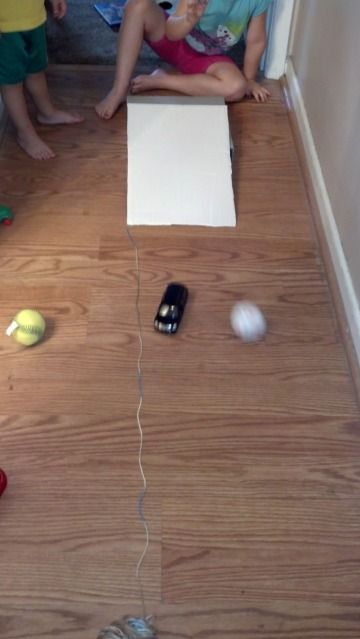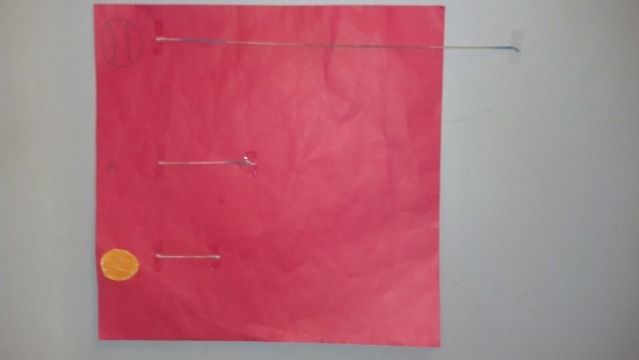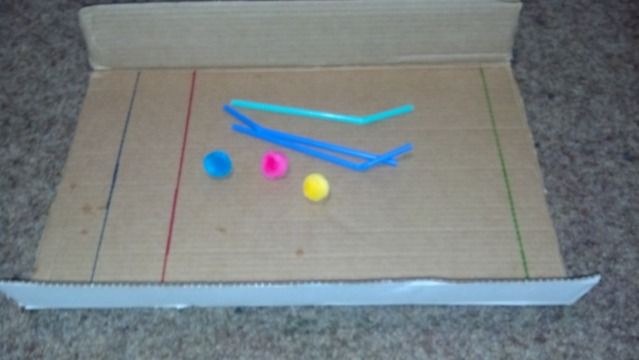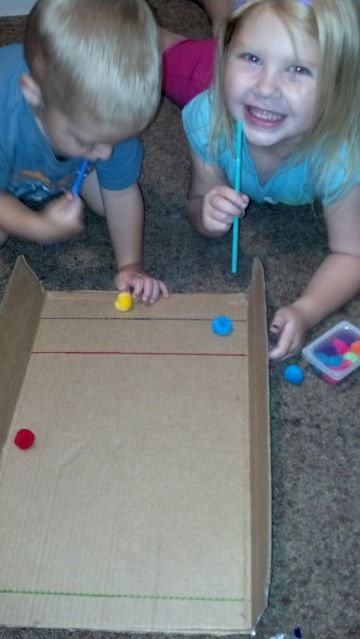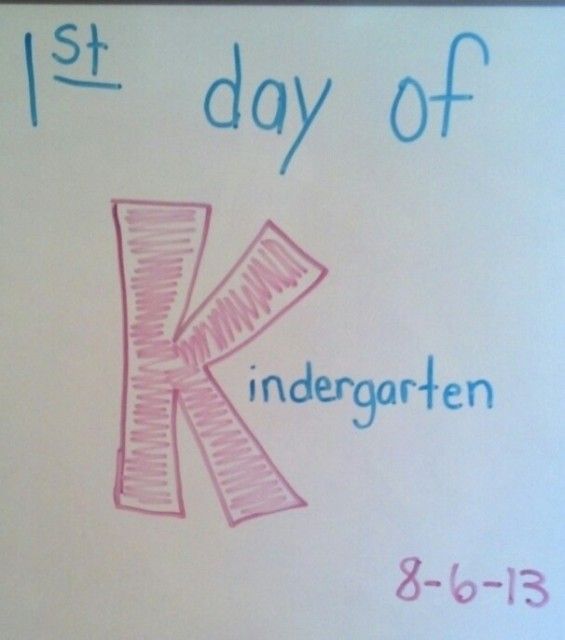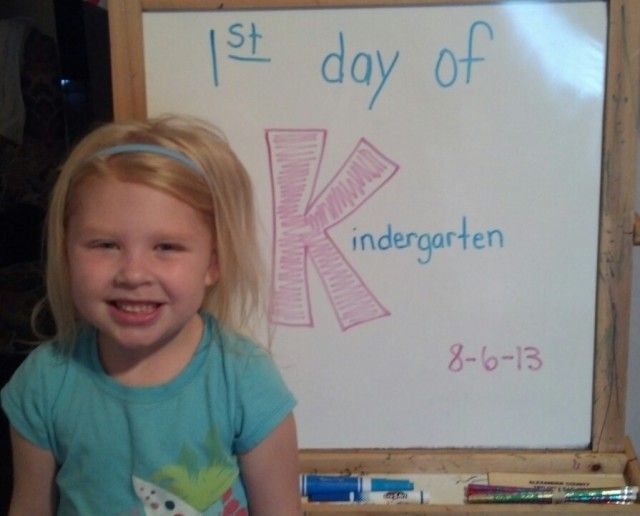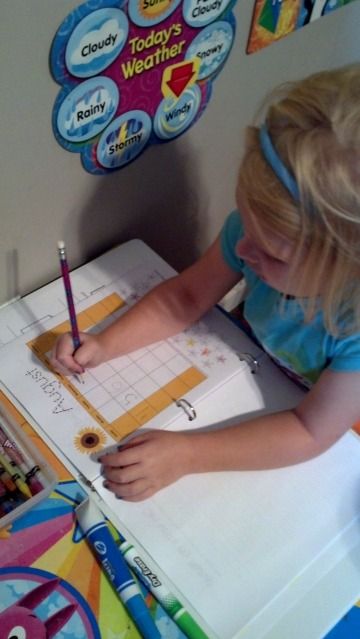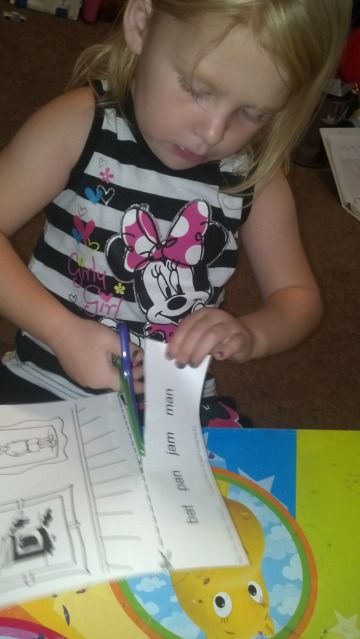As I had mentioned in the post on our curriculum choices, we weren't using an actual curriculum for science. I'm choosing a few 'topics' that I think would be fun to learn about and then using books and experiments/activities to help explore the topics. This week we studied about forces. No, I didn't go completely in depth with this. I wanted J to come away knowing the simple fact that a force 'puts an object in motion' more or less.
I found some great books at our local library to help explain force on a early elementary level.
First we talked about how we can put things into motion using force. We also took a look at strong force and gentle force. How the amount of force used could make things move just a little or a whole lot.
Now it was time for a couple of experiments!! We set up a ramp with a toy car at the bottom. I used a simple piece of cardboard with a small top portion of it bent down. But it kept wanting to slide down, so I placed a binder underneath the ramp and that did the trick. I laid a piece of yarn to the side of the truck, stretching most of the way down the hall.
Next we chose three different balls of different size and weight. A small bouncy ball, a baseball, and a foam ball.
I let J guess which one she thought would move the car the farthest. Then we tested. I let her roll one ball at a time down the ramp. It hit the car and moved it. Where ever the car stopped I cut the yarn to that length, so it was the same as the distance the car moved. Then we set the whole thing up again for the next ball. And continued the same way for all three balls.
And what's a good science experiment without a graph, right? J drew the picture of each ball on our poster board. We then taped the cut piece of yarn beside the corresponding ball. So you can see by the graph that the baseball caused the car to move the farthest, then the bouncy ball, and lastly the foam ball.
On our second day of science work, we talked about how there are 'invisible forces', forces that can move/change things that we can't see. The wind, as an example.
For this activity I set up a plain piece of cardboard. I put a 'starting line' (blue), followed by a line that was close to the starting line (red), and one that was on the other side of the cardboard (green). I grabbed a couple of straws and a few pom-poms and we were ready to go.
I handed each kiddo a straw and instructed J to blow her pom-pom to the red line (the closest). Then asked if it took a little bit of force or a lot of force to move her pom-pom. Next we put them back on the starting line and I asked her to blow hers to the green line on the other side of the board. Did that take a little or a lot of force?
And FYI- a two year old will just blow his pom-pom all over the place and leave slobber on the board :)
After each of our activities, I had J record what we did in her science journal by drawing a picture. I then had her dictate to me what her picture was, and I wrote a simple sentence under drawing
.
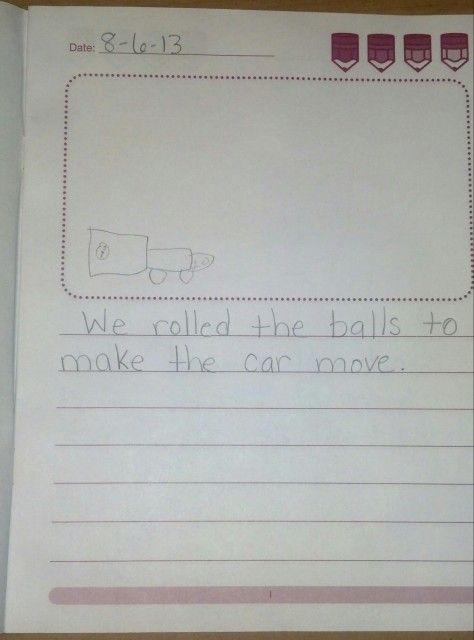

Stay tuned...next week is 'Gravity'!!


